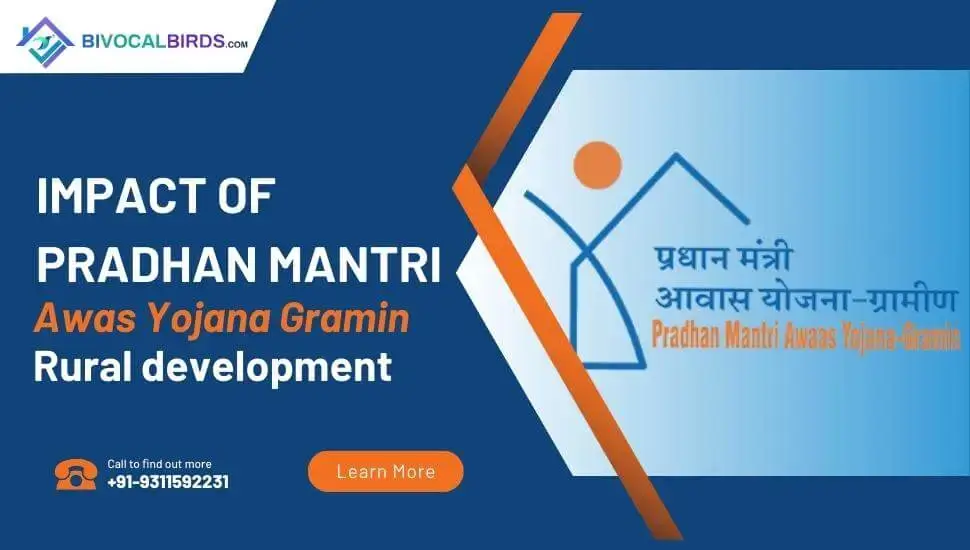Impact of Pradhan Mantri Awas Yojana Gramin on rural development
 07-Nov-2023
07-Nov-2023The Pradhan Mantri Awas Yojana – Gramin (PMAY-G), previously Indira Awaas Yojana, is a flagship housing scheme for rural India launched by the Modi government in 2016. PMAY-G aims to provide pucca houses with basic amenities to all homeless and households living in Kutcha and dilapidated houses in rural areas by 2022.
With a massive target of constructing 2.95 crore pucca houses, PMAY-G is set to significantly improve the rural poor's quality of life and socio-economic conditions. Let's analyse the significant impacts PMAY-G is having on rural development:
Also Read - Some important things to consider while moving into a new house
Improved Housing and Living Conditions
Lack of quality housing with basic facilities like electricity, toilets, LPG, etc., was a significant issue plaguing rural India. By enabling the poor to construct durable, disaster-resistant houses, PMAY-G fulfils the basic necessity of proper shelter.
Houses under PMAY-G have a minimum carpet area of 25 sq. mt with provisions for LPG connection, electricity, toilets, drinking water etc. The scheme has built over 1.9 crore houses, improving the living conditions of beneficiaries.
Access to Basic Amenities
Together with housing, providing basic amenities ensures the well-being and dignity of rural households. LPG connections promote cleaner cooking and reduce health risks caused by traditional cookstoves. Toilets are improving sanitation, privacy and safety, especially for women. Electricity connections enable access to lighting, heating, education, and information.
Women Empowerment
PMAY-G provisions require the house to be owned by a female member or jointly owned by the husband and wife. This empowers rural women and makes them active household economic partners. About 85% of PMAY-G beneficiaries so far are women. Ownership of assets like a house also improves women's social status and decision-making power.
Boost to Rural Economy
Implementing a scheme of this scale has boosted the rural economy by generating increased economic activity, wages and jobs. Nearly Rs 1.3 lakh crore has been spent on house construction under PMAY-G. This increased money flow has stimulated demand for construction materials like cement, iron, bricks, etc., benefiting related industries.
The labour-intensive approach of the scheme has created crores of employment opportunities for rural masons, carpenters and construction workers. This has raised incomes and spending capacity in rural areas.
Poverty Alleviation
By providing houses to the homeless and enabling property ownership, PMAY-G is directly alleviating poverty in rural India. A pucca house with basic facilities significantly enhances the standard of living and reduces monetary deprivation.
Asset ownership provides social and economic security and increases eligibility for credit and government welfare schemes. Overall, PMAY-G is leading to financial inclusion and mainstreaming of the rural poor.
Positive Environmental Impact
Promoting energy efficient housing design, smokeless chulhas, solar power and green technologies, PMAY-G is enabling sustainable rural habitats. Reduced indoor air pollution due to LPG connections and smokeless chulhas are improving respiratory health. Access to toilets and reduced open defecation are improving village hygiene and cleanliness.
The scheme guidelines also promote climate-resilient construction using disaster-resistant techniques and locally suitable materials. This makes rural housing more capable of withstanding natural disasters like floods, cyclones, etc.
Also Read - Creative and Budget-Friendly Home Decor Ideas: Over 20 DIY Suggestions
Social Inclusion
By giving priority to marginalized sections like SCs/STs, freed bonded labourers, manual scavengers, minorities and persons with disabilities, PMAY-G is promoting social justice and inclusion.
Special assistance is being provided for hilly/difficult areas and landless beneficiaries. The unique focus on tribal welfare is bridging inequality gaps and empowering Adivasis.
Overall Development of Villages
Large-scale construction activity under PMAY-G leads to the creation of village infrastructure like internal roads, drainages, community centres, etc. The scheme also enables access to electricity, LPG, toilets and drinking water in rural India through convergence with other flagship schemes like Saubhagya, Ujjwala, Swachh Bharat Mission etc.
This integrated framework is driving overall development at the village level. Better housing also instils a sense of pride and dignity among rural citizens.
Innovative Construction Technologies
PMAY-G is promoting innovative, eco-friendly and disaster-resistant construction technologies to speed up construction, meet targets and enhance quality. Sustainable materials like fly ash bricks, rat-trap bond masonry, filler slabs, etc., are being encouraged.
Cost-effective construction techniques like precast concrete panels, formwork systems and cavity walls are also being adopted. This enhances skills and modernizes the rural construction sector.
Also Read -
Final verdict
PMAY-G is transforming rural housing and enabling poor households to access basic amenities. It empowers women, generates rural employment, alleviates poverty, drives social inclusion, and boosts village infrastructure. Despite challenges like land availability, funds allocation, and coordination issues, PMAY-G has emerged as a game-changer scheme to help improve rural India. Robust implementation with community participation can enable the scheme to achieve its vision of providing 'Housing for All' and transforming rural habitats by 2022.
For further information, You Can Call us or Email us at support@bivocalbirds.com.
Related Blogs:
- PM SVAMITVA Yojana: Benefits and Challenges for Property Owners
- Navigating NaMo Bharat: A Comprehensive Guide to Delhi Meerut RRTS RapidX
Best location To Live In:



